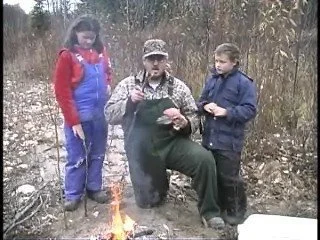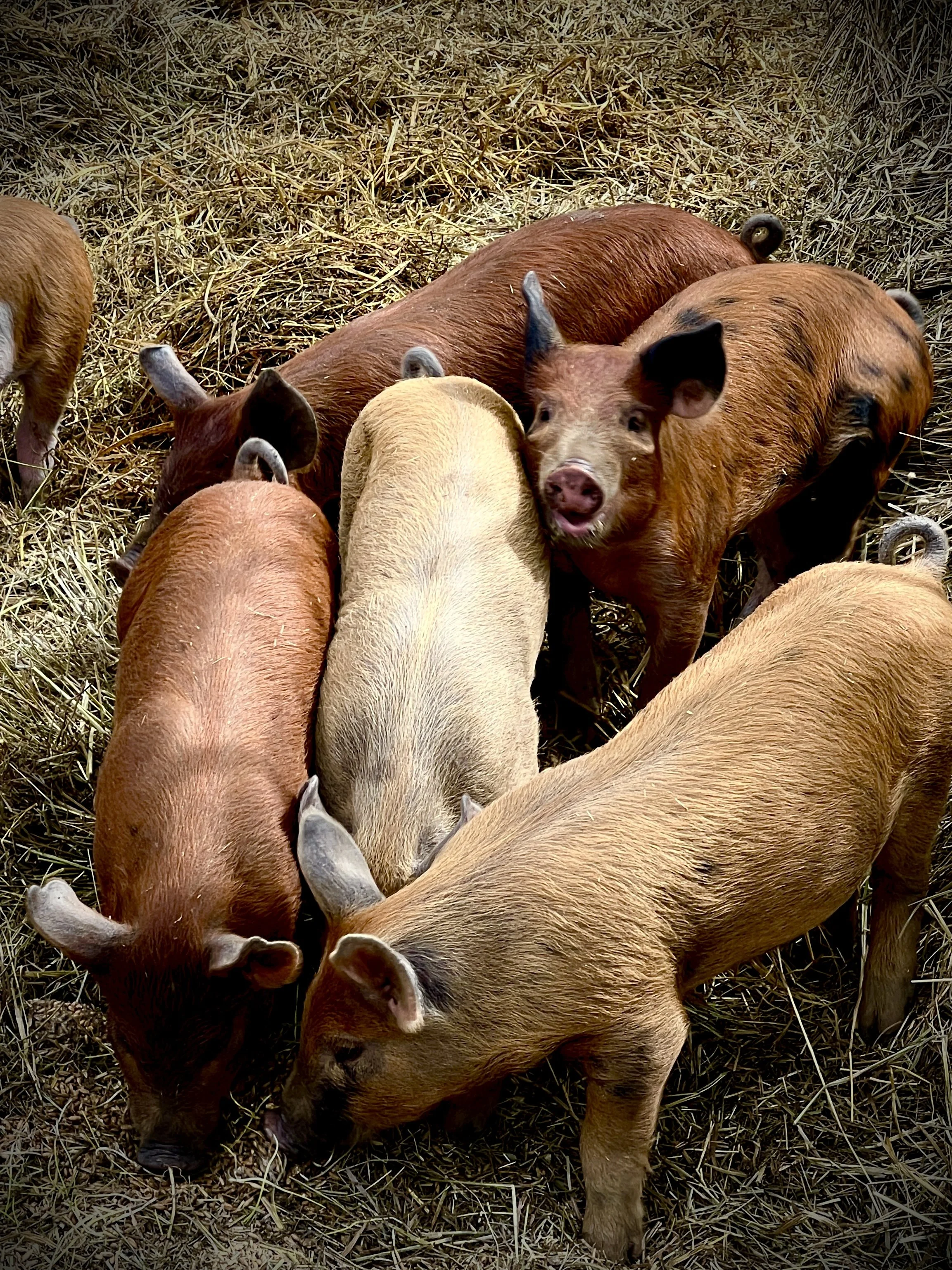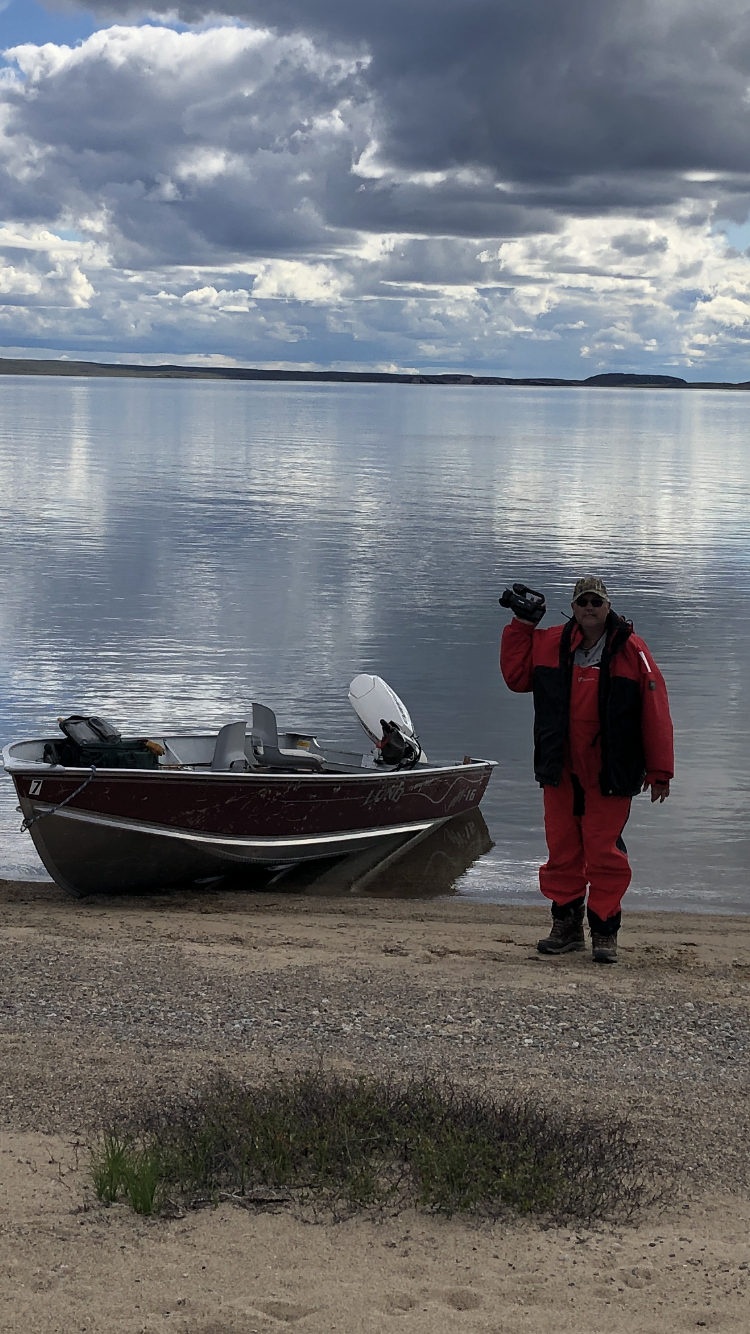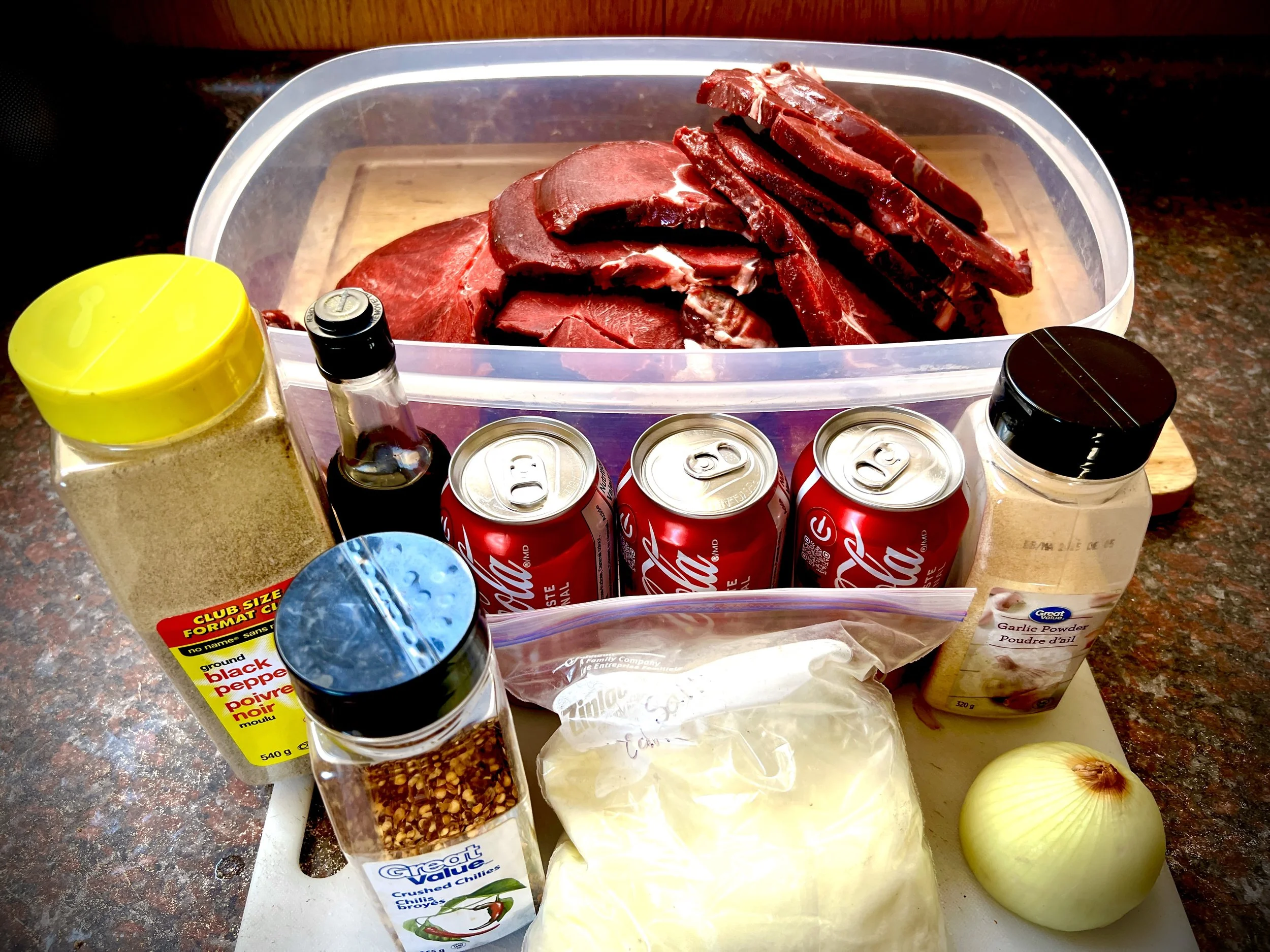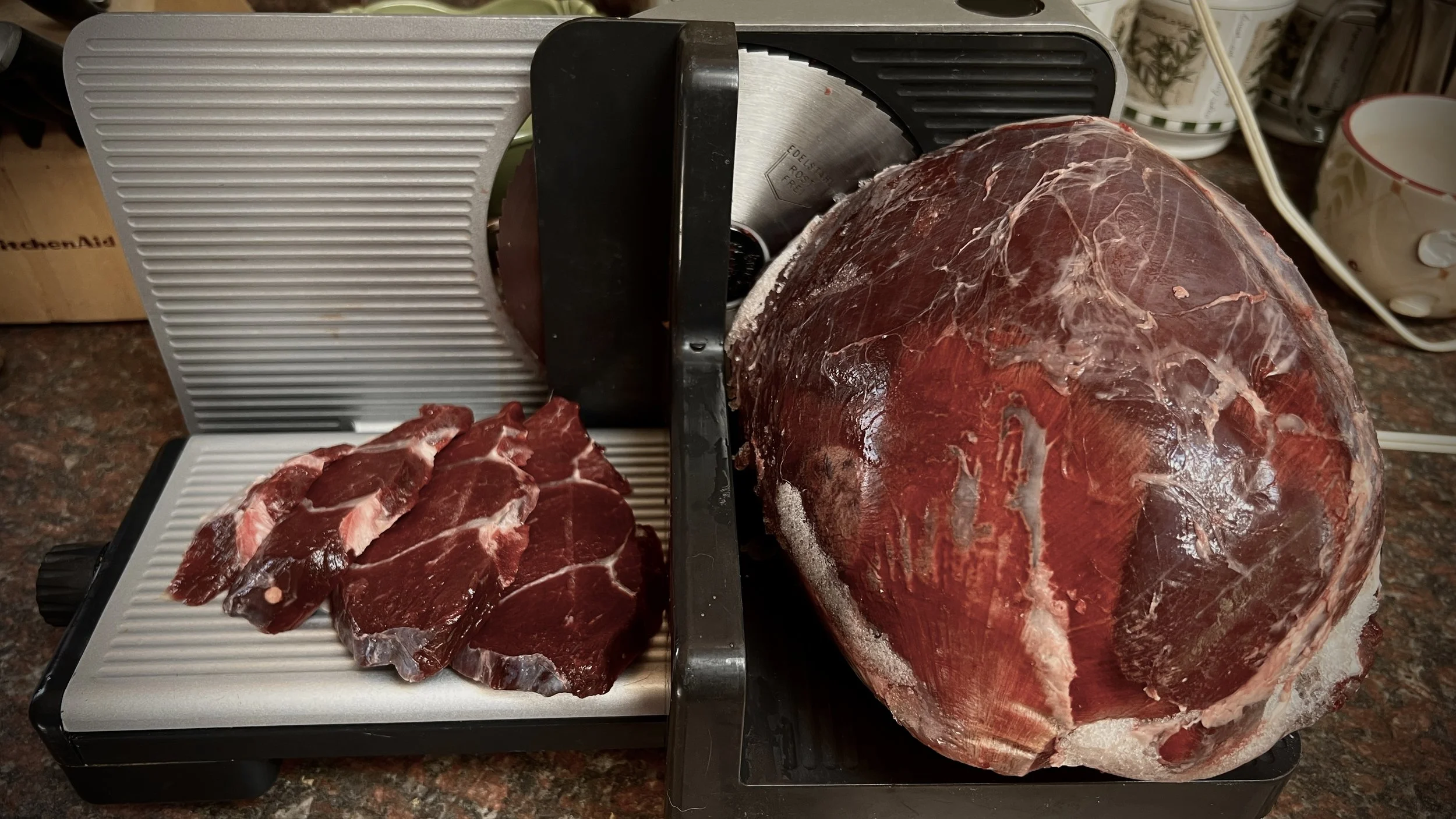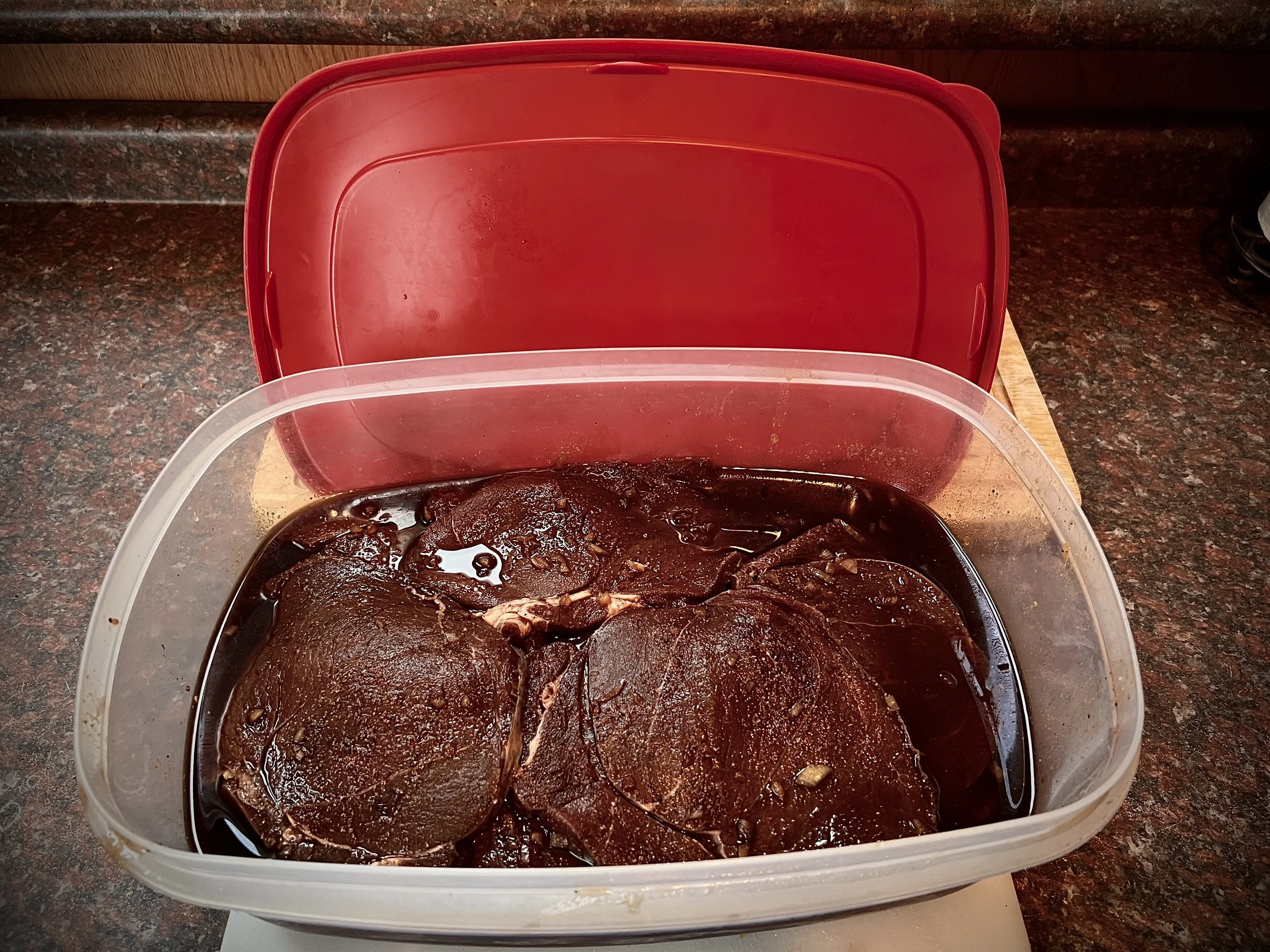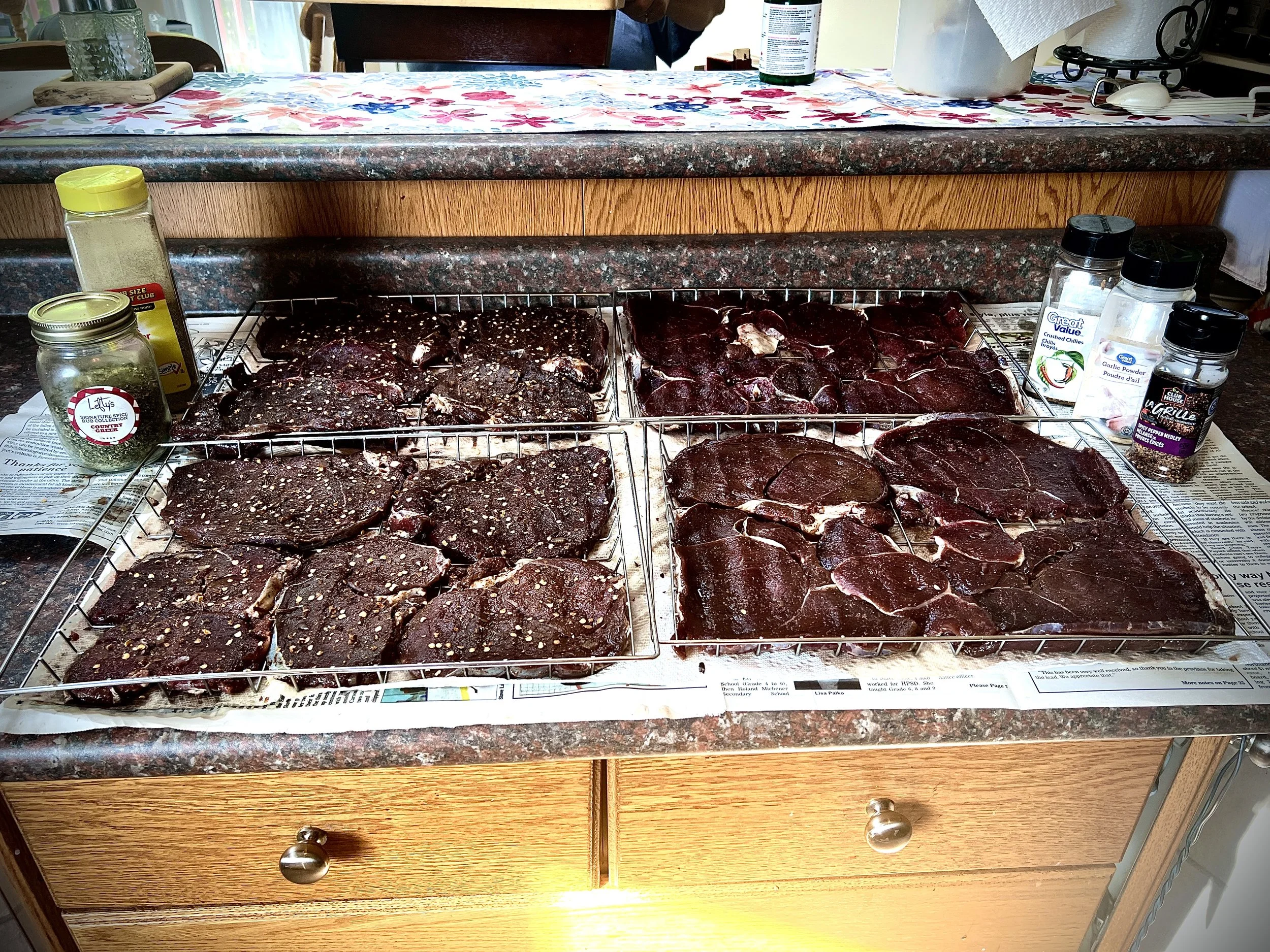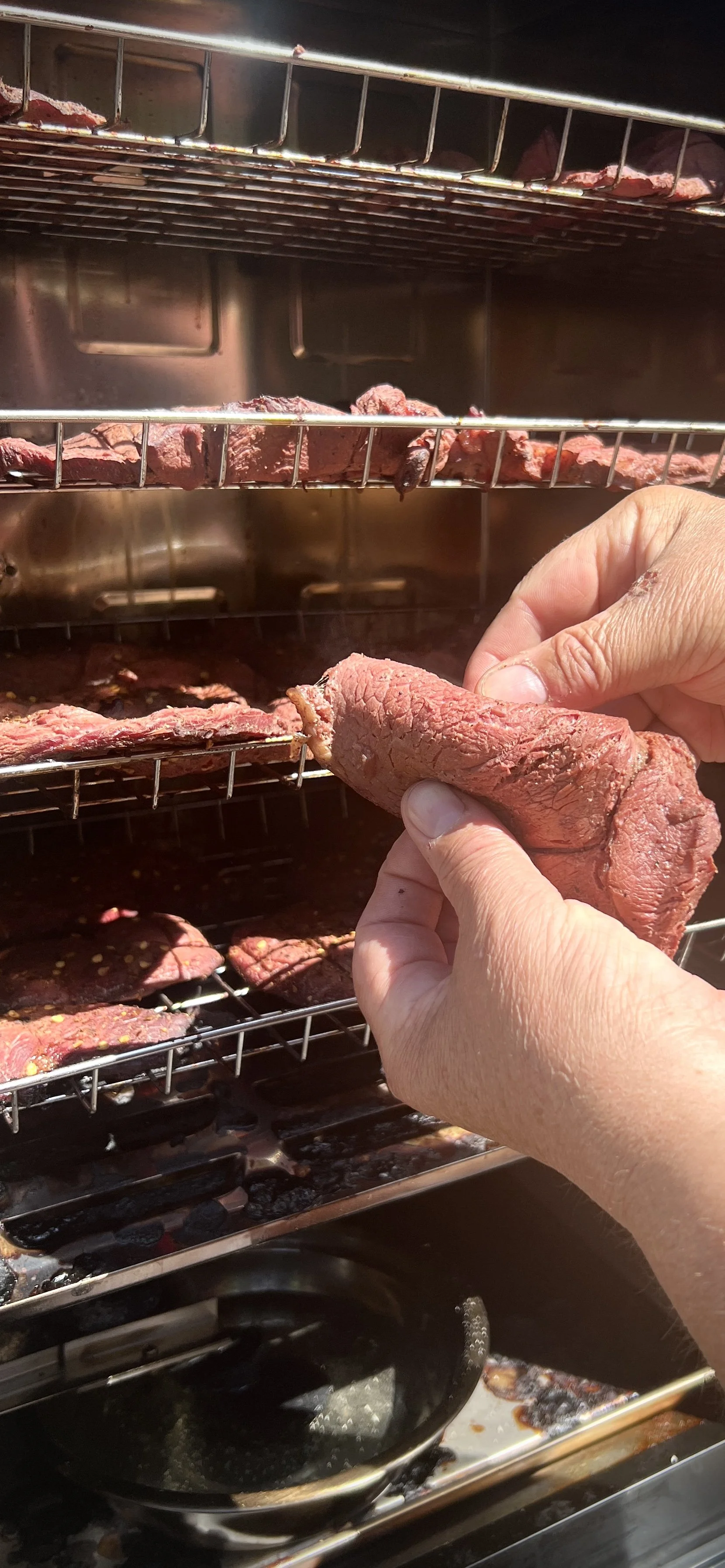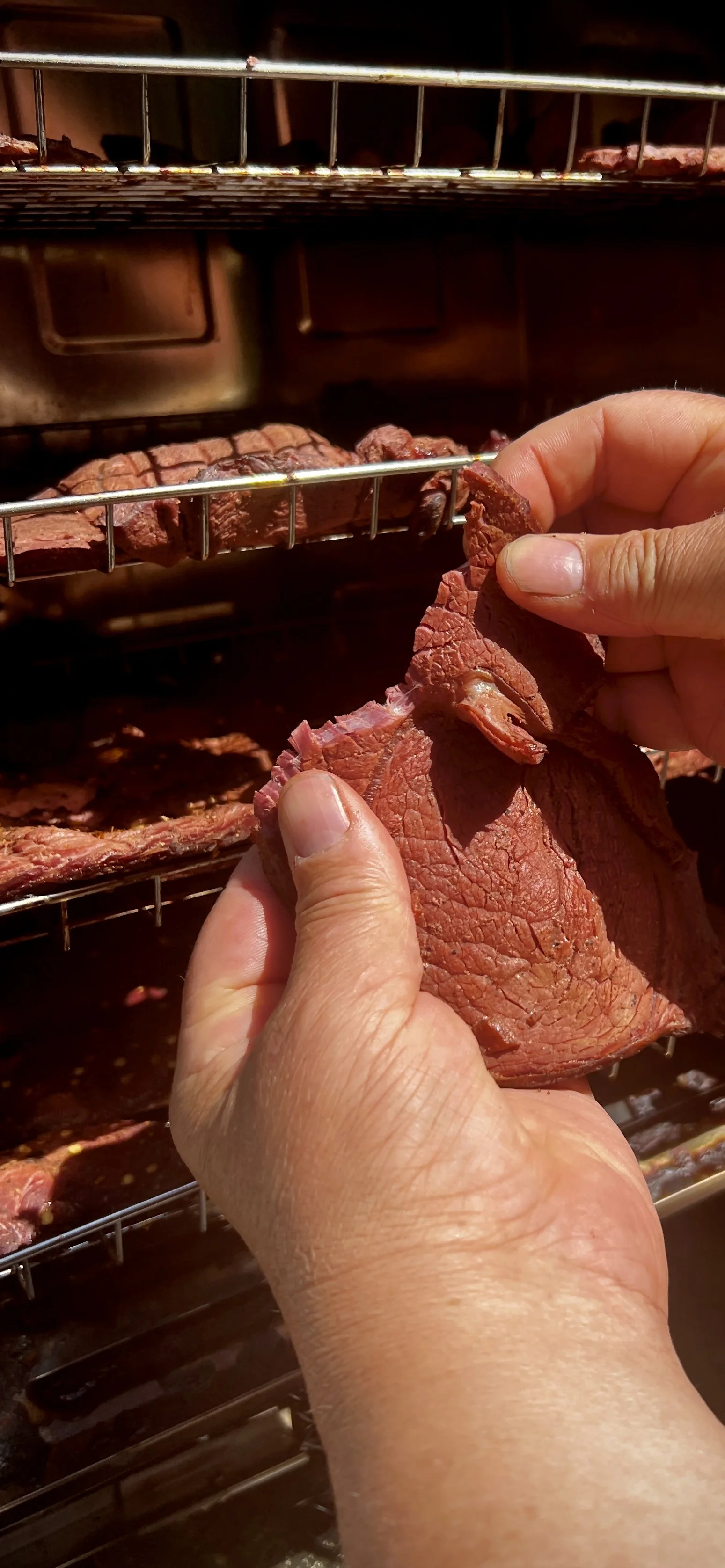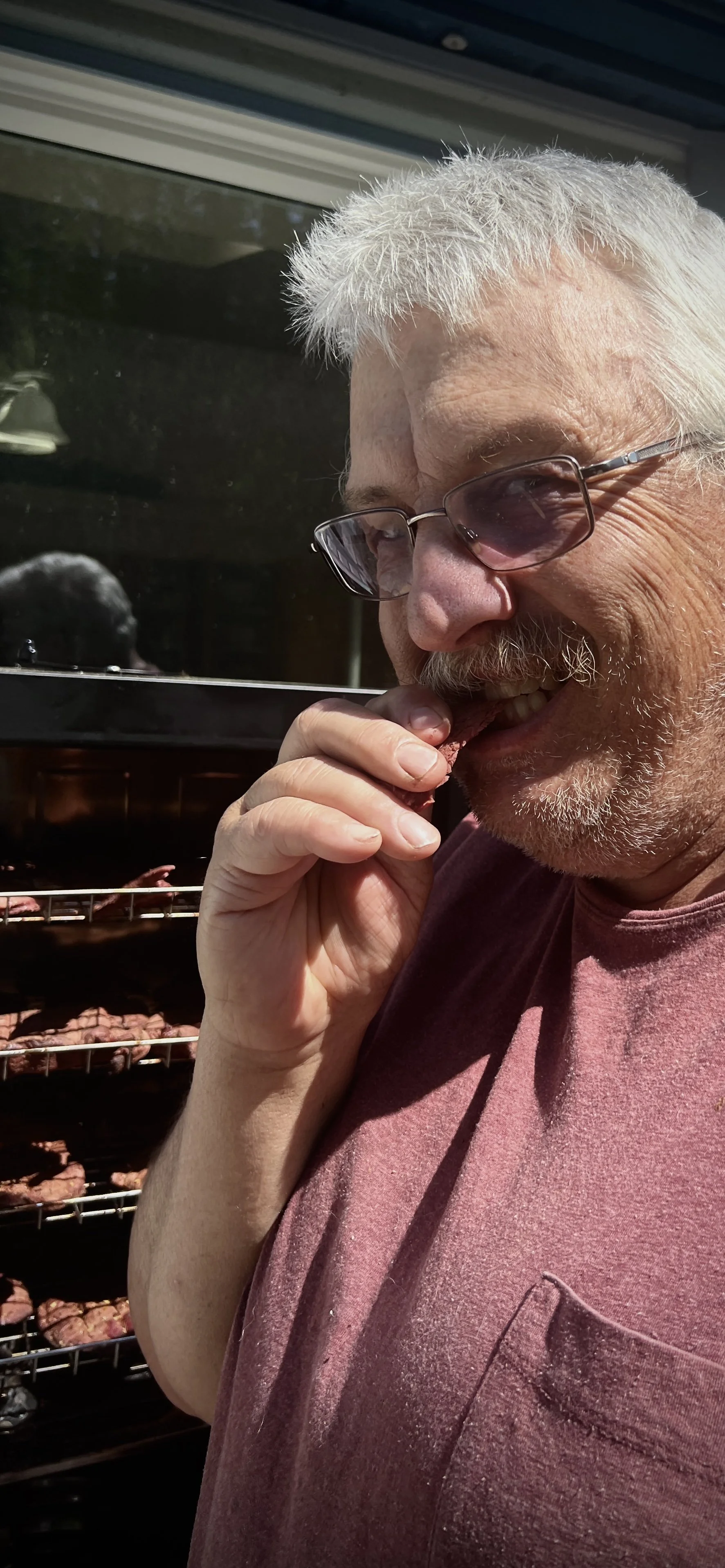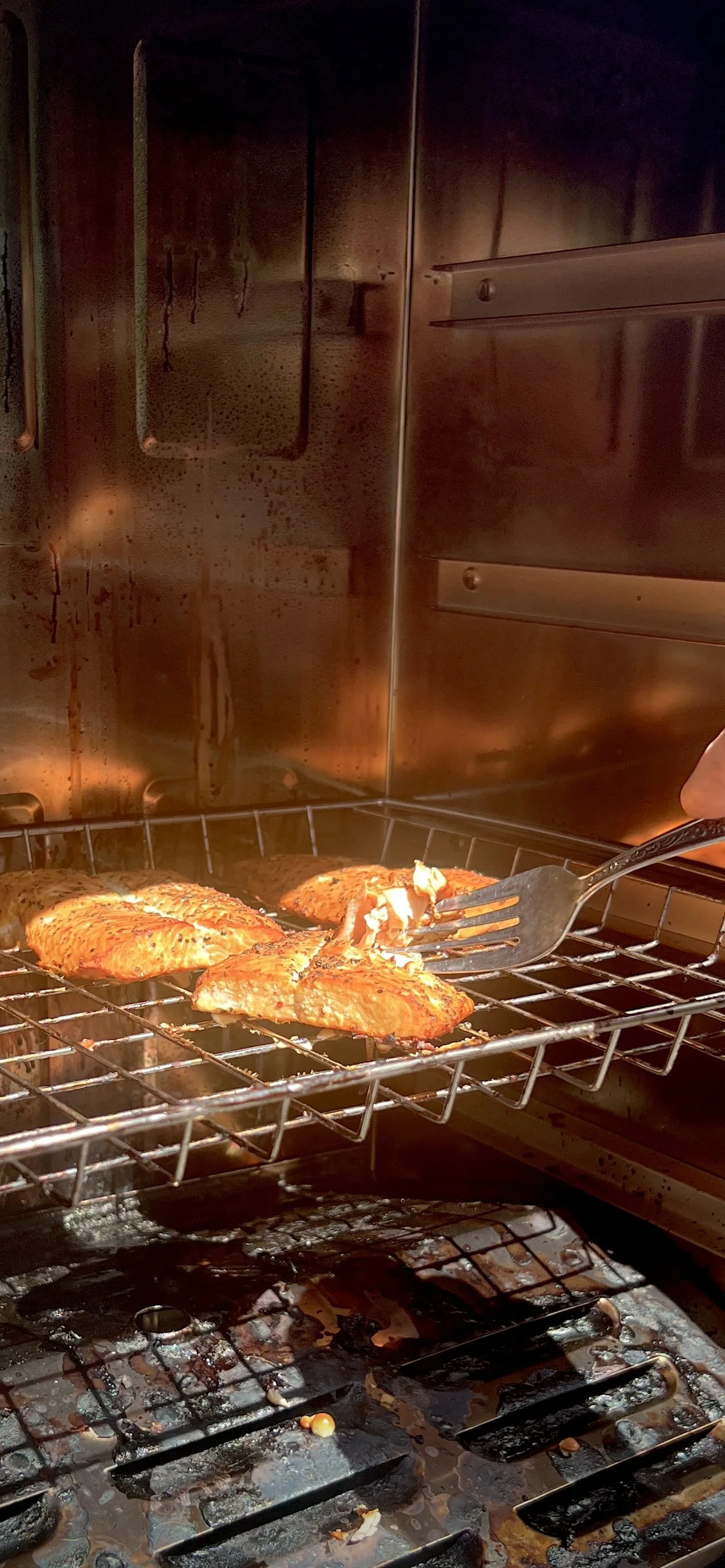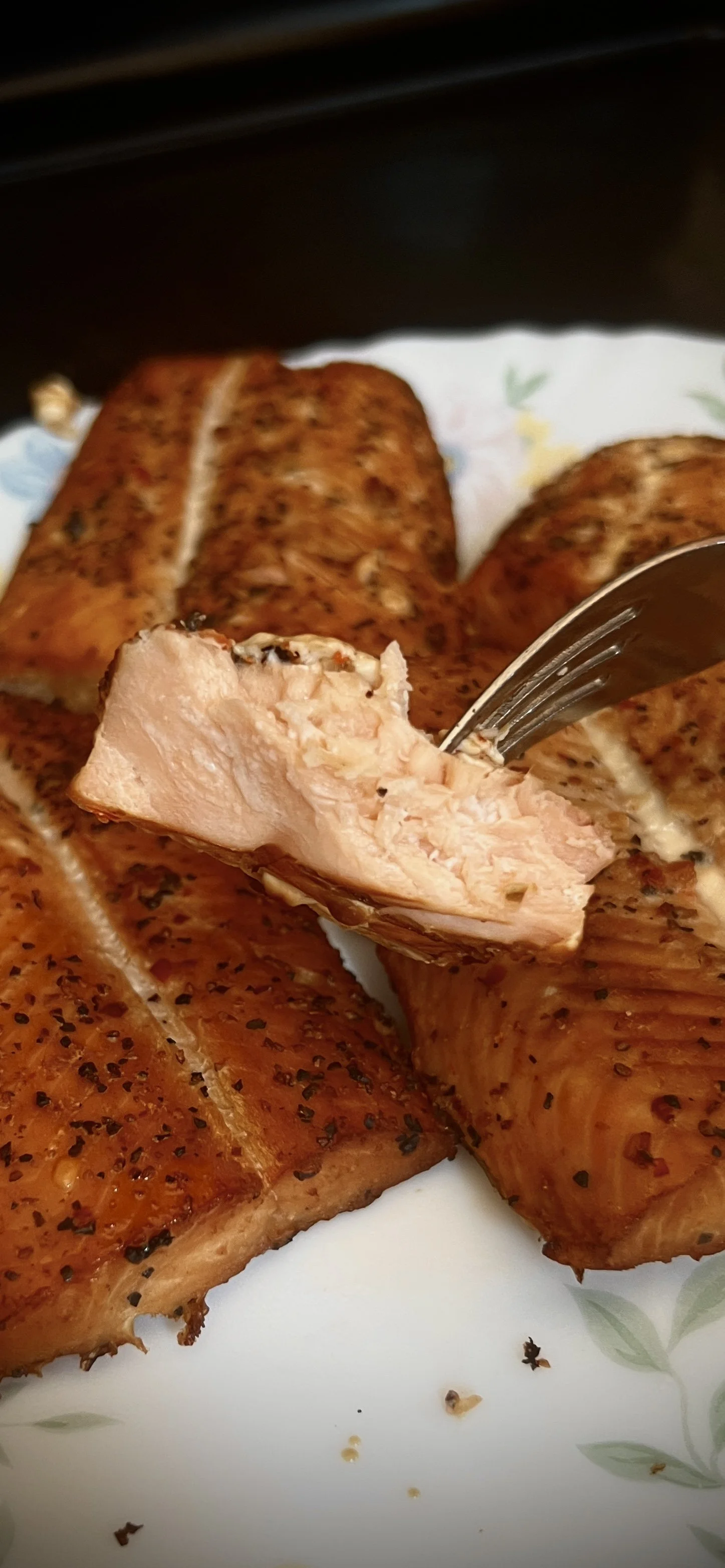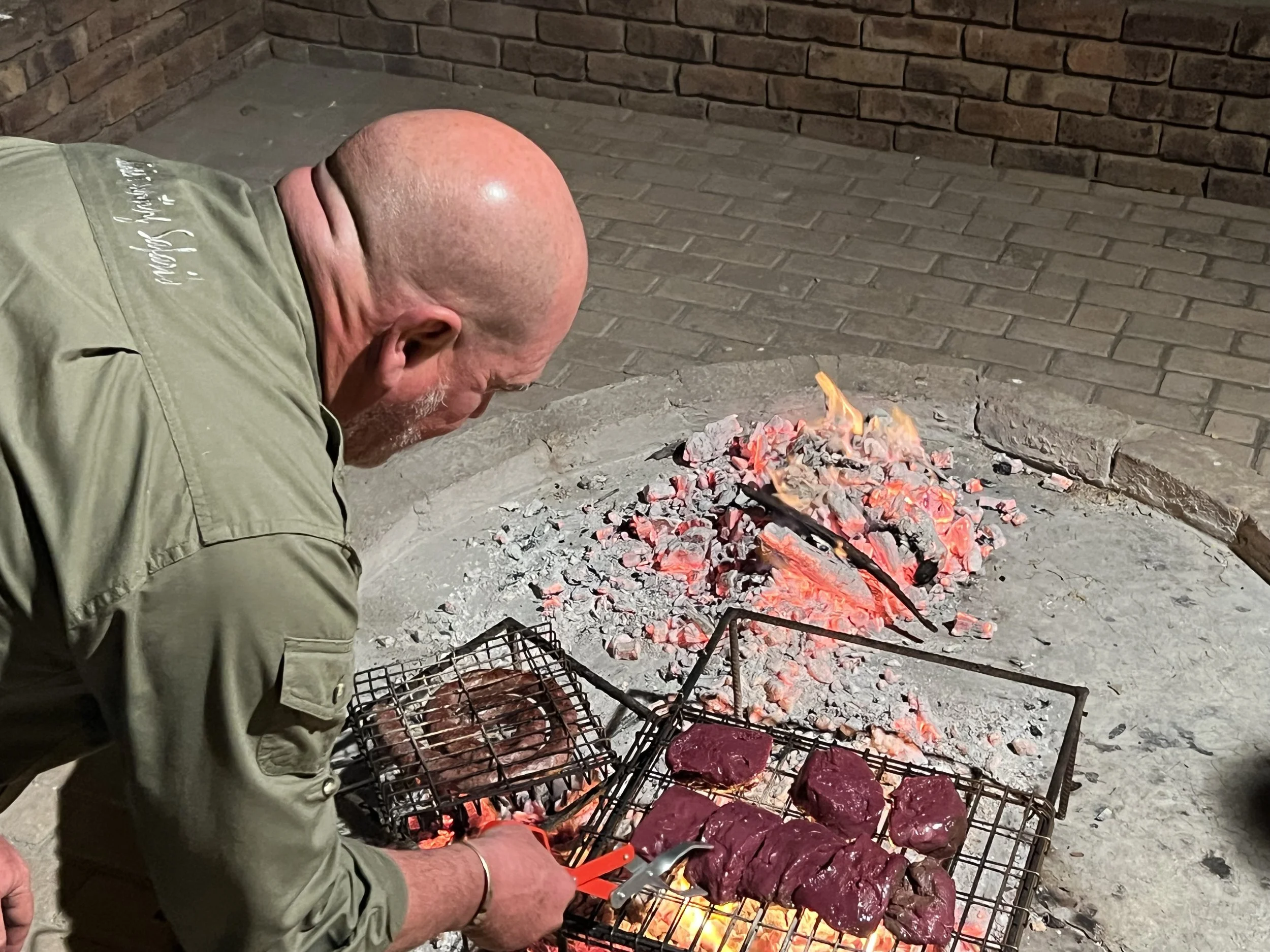Making The Connection
Making The Connection
By Keith Denoncourt
This is roughly 30 years ago. I was cooking up freshly harvested Ruffed Grouse over the fire with my kids Danielle and Michael.
When I was an Outdoor Education and Conservation Instructor, I knew exactly how to gain my students utmost attention. Nothing keeps them quite as focused as when you have freshly prepared wild game directly in front of them. The smells alone brought in several other people from several different classes on a regular basis. It was great to see my class numbers grow so much for just the one day. By tasting the wild game, it allowed several students to sincerely make the natural connection of “why I am sending the message the way I am”. When they appreciated the animal in its fullest capacity, they are now motivated to protect it, and the environment in which it lives. It forms respect as you now have to earn the food source yourself, and put value in to your efforts. The knowledge that you get about how the Environment works naturally is life changing. Every campout, and in every semester, for over 30 years the message of respecting our environment was sent this way. The quality of the food source is directly impacted when we do not respect, or value, where our food source comes from. I am Blessed that I get to experience the highest quality of food sources first hand.
As a Father, it was the Family time that I spent hunting or fishing, that I valued the most. When my Family was out hunting or fishing, several key life lessons occur. Acquiring the food source was just the icing on the cake. The wild meat is highly nutritious, chemical free and free ranging. The acquisition of wild game was always one of my motivators to getting outside, however, it was the Ethics and Morals of Respecting Nature and Caring for all animals that is the trait that my children still proudly carry with them today. For many, many years, it was a complete family effort putting food on to the table. Even now my daughters farm is raising the pigs to compliment our wild game inventory. Now that I have the equipment, I will be learning how to make sausages, burgers, and bacon in the very near future.
Home grown piglets, from my daughters farm, will be adding to our wild game food supply. Sausages, bacon, and burger in the very near future.
The deepest level of respect that I can demonstrate is when I personally process the wild game to its utmost potential. This starter home butcher kit contains filleting knives, bone saws, meat grinder, a meat slicer, packaged seasonings, weigh scale and an electric smoker.
Keith Denoncourt is standing in a place where no one has stood before. Kevin McNeil is taking the picture from the shore of an unnamed, unidentified esker roughly 150 km south of the Arctic circle. The water is crystal clean and only open for roughly 3.5 months a year. It sets a standard of cleanliness and clarity that can not be found anywhere else on Earth.
Now that I am able to create content with Non Typical Nation, I am Blessed that I get to travel to some really cool destinations, and try some of the local food sources. The freshly smoked Lake Trout found up at Aylmer lake Lodge in the NWT of Canada, with Canadian Wildlife Adventures, is unparalleled. The ultra clean crisp cold clean water from the far Northern part of Canada’s NWT give them a fresh taste that can not be found anywhere else. The fact that the owner Kevin McNeil is a professional butcher, and his wife Patti a World Class chef, make their freshly smoked Lake Trout unmatched. It is by far one of my all time favorite lunch time snacks when I am up there. When I was down in South Africa with Boris Basso of Basso Safaris, it was beyond special to have and his team cook up our freshly harvested wild game around the fire. His freshly prepared smoked sausages for during the day were outstanding. Those were some of the driving memories of why we are going back ! It connects me to why I doing what I am doing, and hopefully making I am making difference along the way. Now to bring those flavors back home, and repeatedly relive the wonderful memories of when the harvest was first acquired.
Although I have been deboning my own game now for several years, I have left the sausage making, and hamburger grinding, to the Professionals for professional processing. My reality is that I have a lot to learn about the professional standards of meat preparation. Kevin McNeil said it best when he said “ Presentation is everything !”. A lot of this jerky making, making sausages, or smoking fish, is truly my first time. I am glad to be showing you the learning curve along the way. Lately, I have been watching some of my friends like Brad Fenson “Harvest Your Own” create some outstanding wild game meals. It is truly inspirational. He makes it look so easy. The fact that Brad Fenson has referenced several key “High Calibre” blends of spices, packages and equipment on his “Harvest Your Own” website, and podcasts, makes it a platform I can trust and grow from. I am now able to start picking up some of the equipment, and ingredients, to get me started. Along with some key pointers that I got from Kevin McNeil from Canadian Wildlife Adventures, I will share with you my first attempt of “Elk Jerky” and “Smoked Fish”.
Thank you for respecting wildlife and supporting Conservation efforts along the way ! Never hesitate to call, or ask for information, if we can help you arrange these adventure destinations !
-Keith
These are some base ingredients for a Wild Game jerky recipe. I borrowed, and slightly adapted, the recipe and procedure found on the “Harvest Your Own “ website with Brad Fenson.
I was using a meat slicer to slice the partially frozen Elk roast in to approximately ¼ inch slices.
Following the procedure, and a jerky recipe, that I found on the “Harvest Your Own” website, I boiled my marinate, let it cool completely, then covered my meat slices completely in a plastic container. I flipped the meat after a few hours to ensure that the meat has a complete marinate coverage. The container was left in refrigerator over night.
After a 24 hour marinate, the Elk meat was spread out over a old newspaper / paper towel backdrop, padded dry and then let air dry for roughly one hour before I put in the smoker. I lightly sprinkled half of my jerky with a Spiced Pepper Medley, half was Crushed Chili Blend.
Keeping the smoker between 170 F - 200 F was easy with the electric temperature controls and the automatic bisquettes feeder. Mesquite was smoke of choice this time. Hickory smoke would be my second choice. Overall time in the smoker was slightly over three hours for the jerky, 1.5 hours for the fish.
A few cups of coffee were had rotating the racks and monitoring the cooking process.
Bending the jerky is one way of checking if it is done. It should bend easily without breaking. Some white muscles fibres may show when completely cooked.
Tearing the jerky is another way of determining if it is done. White muscle fibers should show when the jerky is near completion.
When the jerky is done, place them is plastic bags to cool completely before placing them in the freezer for long term storage….only if required (lol).
Tasting the jerky is the final method of determining when the jerky is done. Personal preference is your ultimate deciding factor.
The simplest of smoking recipes for fish is a spicy peppered medley, with garlic. Lightly brushed with a slight brown sugar glaze before going in to a Mesquite smoke for roughly 1.5 - 2 hours. I left it in the refrigerator overnight to marinate. This smoked fish never made it to the freezer, it was eaten immediately that night for supper.
The meat of the fish will flake cleanly when done.
My all time favorite lunch snack is smoked Lake Trout from Aylmer Lake Lodge.
Boris Basso with Basso Safaris is cooking up some of Keith Denoncourt’s Blue Wildebeest over an open fire. These memories are some of the driving forces of why we are returing to South Africa in the very near future.

